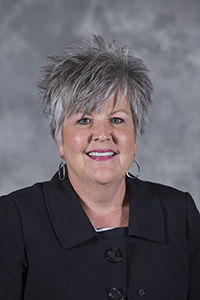Iowa State joins alliance to develop diverse STEM faculty

Courtesy of Dawn Bratsch-Prince
Dawn Bratsch-Prince, associate provost of faculty, has a positive outlook for more minority representation within STEM after Iowa State joined Aspire: The National Alliance for Inclusive and Diverse STEM Faculty.
October 29, 2019
Iowa State and 19 other universities have joined Aspire: The National Alliance for Inclusive and Diverse STEM Faculty.
The Aspire Alliance is a national project and network of universities cohorts. It creates an inclusive and diverse environment for teaching practices and increases diversity in STEM faculty. Iowa State was selected as one out of the 20 public universities in the Alliance’s second cohort.
“It’s a national project and Iowa State is very pleased to be a part of [it],” said Dawn Bratsch-Prince, the associate provost of faculty. “It’s a national network of universities focused on transforming the faculty.”
The Aspire Alliance’s goal is to increase diversity in STEM programs due to the underrepresentation of women, members of racial and ethnic groups, people with disabilities and low socioeconomic backgrounds in the programs.
“We know we need to make progress on increasing the representation,” Bratsch-Prince said.
The Aspire Alliance launched their efforts in February. Over the next three years, Brastch-Prince said the faculty network plans on sharing their best practices and strategies with their partner institution.
“We know having more women and faculty of color in STEM discipline[s] will help female students and students of color […] be successful, and research shows that students value learning from faculty who have shared life experiences,” Bratsch-Prince said. “I can imagine enhanced training for our faculty search committee to ensure we’re doing everything possible to diversify our hiring pools and candidates. I also vision a more tailored orientation and mentoring program for our new STEM faculty and create a smoother entry to Iowa State and the campus community.”
The 19 public research universities joining Iowa State in the second cohort include Auburn, Ball State, Central Michigan, Florida International, North Dakota State, South Dakota State, Tennessee (Knoxville), Texas (Austin), Arkansas, California (Davis), Cincinnati, Florida, Georgia, Missouri, Nebraska (Lincoln), North Carolina (Charlotte), North Texas, South Florida and Western Michigan.
Bratsch-Prince said she has a positive outlook for more minority representation and she is eager to learn from Iowa State’s cohort partners and to share best practices.
















